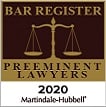About 35 million used tires are sold in the United States each year. According to the National Highway Traffic Safety Administration (NHTSA) over 11,000 car accidents are caused by tire defects each year and a minimum of 500 deaths occur each year because of tire-related crashes. Old, aged or used tires are common causes of blow-outs and tire de-tread. Used tires often present unseen and unknown danger to consumers. Age, poor maintenance and defects in design and manufacture cannot be seen by the average consumer. Used tire sales are unregulated and used tires cannot be traced to obtain a history of their use.
Used tires are supplied by tire recyclers who obtain used tires from salvage yards, scrap heaps and on the internet. Any tire with a tread over 2/32 of tread depth is resold. Some used tire dealers conceal visual defects and paint the tires to make them look new. Recently a used tire shop in Antioch, California was found to be using a mixture of gasoline and tar to make used tires look better. Used tire dealers are not adequately trained in tire inspection and safety and do not receive recall notices from tire manufacturers. Many do not know how to interpret the DOT code on the tire for information about the tire.
The distribution and sale of used tires are not subject to Federal legislation. State laws usually regulate tread depth but nothing else. The Rubber Manufacturers Association urges consumers and retailers to avoid used tires because of an unknown history. Tires may be damaged by improper service, maintenance or storage conditions.
Almost all vehicle and tire manufacturers warn consumers against using tires older than six (6) years because they degrade internally, regardless of use. The effects of aging are not usually detectable. A tire is comprised of layers of rubber and steel belts bonded together in manufacturing process by heat and by pressure. Over time, the combination of the heat generated in the tires and breakdown of the rubber components by oxidation causes a tire to age rapidly and degrade. NHTSA affirmed that old tires are subject to greater stress which creates a problem for consumers because aging may not be visibly detectable and since there is no standard test to assess the serviceability of a tire, even an inspection performed by an expert may not always reveal the extent of tire deterioration.
The attorneys of the Van Blois & Associates in Oakland and Stockton, California are experienced in successfully prosecuting defective tire cases for their clients. One example of successful litigation for defective tires occurred when the tread separated on our client’s right rear tire causing him to lose control of his car and go off the highway and roll over. The roof crushed on his head resulting in quadriplegia. The tire was purchased as a used tire in Oakland, CA six days earlier. There were no defects with the tire that were noticeable to a lay person. The tread depth was worn but was within legal limits.
Inspection of the tire after the accident revealed that the tread separated between the belts. The remaining rubber was brittle and there were significant cracks at the belt edge indicating significant oxidative degradation.
The tire manufacturer had recognized that the typical failure of their tires involved a belt edge separation as a result of the fatigue and crack growth of the belt skim at the belt edge. We proved the tire was defective because the manufacturer did not adequately protect against oxidative degradation and tread separation.
Although the used tire was approximately five years old, it was defective and the used tire dealer and the manufacturer were sued. The case settled for $3,500,000. The Van Blois & Associates can determine if a defective tire was a cause of a vehicle accident. Contact the law firm if you have questions about used and defective tires.






















